
During the American Civil War, the United States Army, the land force that fought to preserve the collective Union of the states, was often referred to as the Union Army, the Grand Army of the Republic, the Federal Army, or the Northern Army. It proved essential to the restoration and preservation of the United States as a working, viable republic.

James Birdseye McPherson (/məkˈfərsən/) was a career United States Army officer who served as a general in the Union Army during the American Civil War. McPherson was on the general staff of Henry Halleck and later of Ulysses S. Grant and was with Grant at the Battle of Shiloh. He was killed at the Battle of Atlanta, facing the army of his old West Point classmate John Bell Hood, who paid a warm tribute to his character. He was the second-highest-ranking Union officer killed in action during the war.

Richard Jaeckel was an American actor of film and television. Jaeckel became a well-known character actor in his career, which spanned six decades. He received an Academy Award nomination for Best Supporting Actor with his role in the 1971 adaptation of Ken Kesey's Sometimes a Great Notion.

The Horse Soldiers is a 1959 American adventure war western film set during the American Civil War directed by John Ford and starring John Wayne, William Holden and Constance Towers. The screenplay by John Lee Mahin and Martin Rackin was loosely based on Harold Sinclair's 1956 novel of the same name, a fictionalized version of Grierson's Raid in Mississippi.

The Battle of Rich Mountain took place on July 11, 1861, in Randolph County, Virginia as part of the Operations in Western Virginia Campaign during the American Civil War.
The Battle of the Tongue River, sometimes referred to as the Connor Battle, was an engagement of the Powder River Expedition that occurred on August 29, 1865. In the battle, U.S. soldiers and Indian scouts attacked and destroyed an Arapaho village.

The First Battle of Boonville was a minor skirmish of the American Civil War, occurring on June 17, 1861, near Boonville in Cooper County, Missouri. Although casualties were extremely light, the battle's strategic impact was far greater than one might assume from its limited nature. The Union victory established what would become an unbroken Federal control of the Missouri River, and helped to thwart efforts to bring Missouri into the Confederacy.
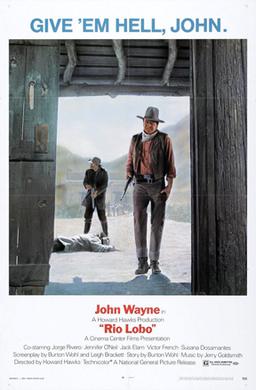
Rio Lobo is a 1970 American Western film directed and produced by Howard Hawks and starring John Wayne, from a screenplay by Burton Wohl and Leigh Brackett. The film was shot in Cuernavaca in the Mexican state of Morelos and in Tucson, Arizona. The musical score was composed by Jerry Goldsmith. It was the third Howard Hawks film varying the idea of a sheriff defending his office against belligerent outlaw elements in the town, after Rio Bravo (1959) and El Dorado (1966), both also starring John Wayne. Rio Lobo was the last film made by Hawks.

Rifles for Watie is a children's novel by American writer Harold Keith. It was first published in 1957, and received the Newbery Medal the following year.

Walter Frank Hermann Wolff was an American actor whose film career began with roles in five 1958–61 Roger Corman productions and ended a decade later in Rome, after many appearances in European-made films, most of which were lensed in Italy.
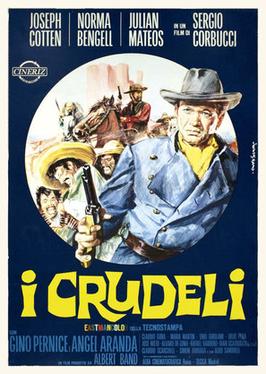
The Hellbenders is a 1967 Spaghetti Western directed by Sergio Corbucci.

Louisville in the American Civil War was a major stronghold of Union forces, which kept Kentucky firmly in the Union. It was the center of planning, supplies, recruiting and transportation for numerous campaigns, especially in the Western Theater. By the end of the war, Louisville had not been attacked once, although skirmishes and battles, including the battles of Perryville and Corydon, Indiana, took place nearby.

John Crawford was an American actor. He appeared in a 1961 episode of The Twilight Zone, called "A Hundred Yards Over the Rim", and in several Gunsmoke episodes. He had a key role in the 1975 film Night Moves, a crime thriller starring Gene Hackman. He also played the mayor of San Francisco in 1976's The Enforcer, the third Dirty Harry film featuring Clint Eastwood, as well as the Chief Engineer in Irwin Allen's classic 1972 box-office smash and disaster-film epic The Poseidon Adventure.

Bridget Divers or Michigan Bridget was an Irish immigrant who rode with the First Michigan Cavalry during the American Civil War. Variations of her surname include Diver, Divers, Deaver, Deavers, Devens, Devins and Devan; and she was known as "Irish Biddy" to Sheridan's men. Unfortunately, none of the accounts of her combat activities come from a verifiable eye-witness. Much of the literature from the middle of the 19th century is written in an idealized and highly stylized form, conforming to the standards of propriety in that era. Nonetheless, careful analysis of surviving records show Michigan Bridget to have been a real person, after removing the almost mythological language frequently used to describe her exploits.
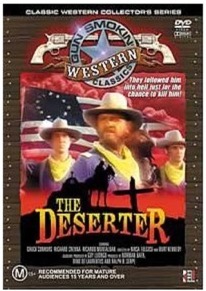
The Deserter, also known as The S.O.B.s and The Devil's Backbone is a 1970 Italian-Yugoslav American international co-production Western film produced by Dino De Laurentiis. It was directed by Burt Kennedy and written by Clair Huffaker.

The Last Outpost is a 1951 American Technicolor Western film directed by Lewis R. Foster, set in the American Civil War with brothers on opposite sides. This film is character actor Burt Mustin's film debut at the age of 67.
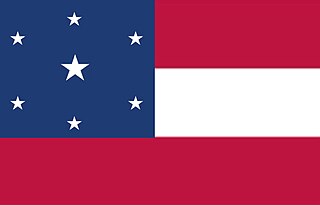
The Mason Henry Gang were bandits operating in Central and Southern California in 1864–1865. As the Civil War was in progress, they were able to pose as Confederate Partisan Rangers, and their original mission was to rid the area of (anti-slavery) Republicans. But when it became clear that the Confederate cause was lost, they turned to outlawry, plundering and killing without mercy.

The Black Dakotas is a 1954 American Technicolor Western spy film directed by Ray Nazarro and produced by Columbia Pictures. Set during the American Civil War and filmed at the Iverson Movie Ranch, the film stars Gary Merrill as a cold-blooded secret agent using the war for his own ends. It also stars Wanda Hendrix and John Bromfield. The film features The Lone Ranger television series Jay Silverheels and Clayton Moore in separate roles as well as Richard Webb of Captain Midnight.
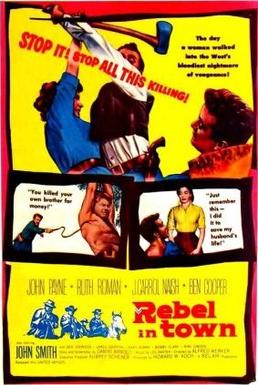
Rebel in Town is a 1956 American Western film directed by Alfred L. Werker and starring John Payne, Ruth Roman, J. Carrol Naish and Ben Cooper.

The 3rd Louisiana Infantry Regiment was a unit of foot soldiers from Louisiana that fought in the Confederate States Army during the American Civil War. The regiment distinguished itself at Wilson's Creek in 1861. The 3rd Louisiana fought at Pea Ridge, First Corinth, Iuka, and Second Corinth in 1862. The unit defended Vicksburg in 1863 where it was captured. At Vicksburg, the unit's fortification was twice blown up by powerful land mines. The surviving soldiers were paroled and exchanged, after which they performed guard duty for the rest of the war.



















